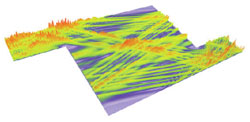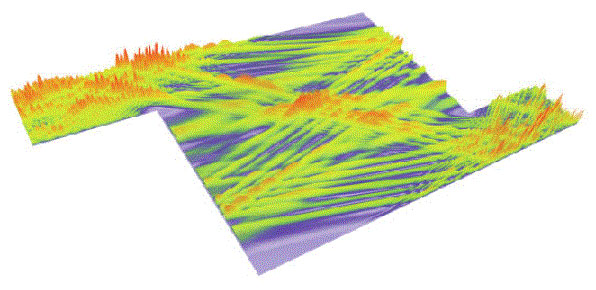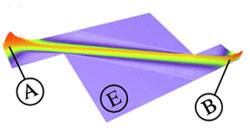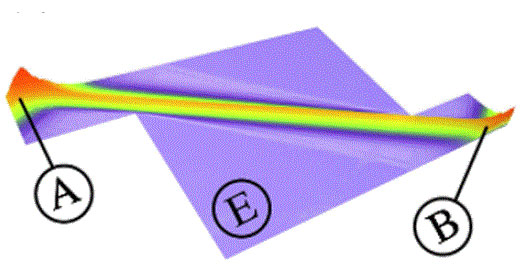How to Shout Without Anyone Hearing
You can send sound across a room to a friend without a third person hearing you, according to a theoretical paper in the 25 March Physical Review Letters. The trick is getting the sound to act like a narrow beam of particles, rather than a stream of spreading waves. The team showed how such “channeled” waves can be constructed mathematically given some information about how waves scatter in the specific environment. Their result could lead to improved efficiency in sending signals with sound or electromagnetic waves and possibly to more secure signals.
There are many situations where waves scatter through a complex environment, such as light going through a turbid medium (like milk) or sound bouncing off many obstacles in a room. In recent years, researchers have dramatically improved their ability to measure properties of such complex scatterers and even to “shape” waves that will propagate through them without losing much energy. Some of these methods start by measuring the so-called scattering matrix for the medium, a mathematical representation that is used to calculate the details of transmission and reflection for waves of any initial shape. Researchers measure the scattering matrix with data from an array of transducers, which can both detect and transmit waves in the system in a controlled way.
Stefan Rotter, Philipp Ambichl, and Florian Libisch, of the Vienna University of Technology, have now used the scattering matrix to solve a challenging problem: Given a complex scattering medium, how can one construct waves that will transmit as a collimated beam, like particles? For example, everyone in a concert hall hears the orchestra, regardless of the directions the instruments are pointed, because the wavelengths of sound are comparable to the sizes of the instruments and the features on the walls. The waves diffract and scatter in all directions in response to all of these surfaces.
But in principle, sound waves could be transmitted directly from a source on stage to a single listener, without anyone else hearing. The wave would need just the right combination of amplitudes and phases, so that any scattering off of one surface would be canceled out by scattering off of other surfaces. Ordinarily such a wave would be nearly impossible to determine amongst all of the possibilities, but Rotter and his colleagues have come up with a mathematical procedure that starts with the scattering matrix. Using computer simulations, the team generated these particle-like waves, which they call NOTES–noiseless time-delay eigenstates–in several different situations. These included a rectangular box, a box with one curved wall, and two examples of boxes filled with random scatterers (akin to a potentially “opaque” medium).
In a practical situation, the waves would be generated by the same transducer array that measures the scattering matrix. A computer would provide the precise waveform to be emitted by each wave emitter or loudspeaker in the array.
The researchers are now discussing their method with experimentalists who specialize in measuring the transmission matrix in acoustic, optical, and microwave systems. Rotter and his colleagues foresee benefits for any situation where long-wavelength signals would ordinarily be diffracted and scattered. For example, secret radio wave signals could be sent directly to a single receiver, without energy being wasted on scattering off of buildings or the threat of eavesdroppers detecting them. Another possibility is that a light or ultrasound beam could be kept focused as it travels through a medium like human tissue.
“The method is impressive,” says Jason Fleischer of Princeton University, “because it chooses, from the set of random and chaotic possibilities, trajectories which most closely resemble classical (particle-like) paths.” He says these special wave states “can be used for applications such as imaging through turbid media, improved emission from random [cavity-free] lasers, and noise control.”
–David Appell
David Appell is a freelance science writer.
More Information
More images and explanations from Rotter, et al.
Light Finds a Way through the Maze–Physics Viewpoint essay by John Pendry
The Information Age in Optics: Measuring the Transmission Matrix–Physics Viewpoint essay by Elbert G. van Putten and Allard P. Mosk
If I Could Turn Back Time (Focus, 2004)
Time reversal signal processing in Wikipedia







